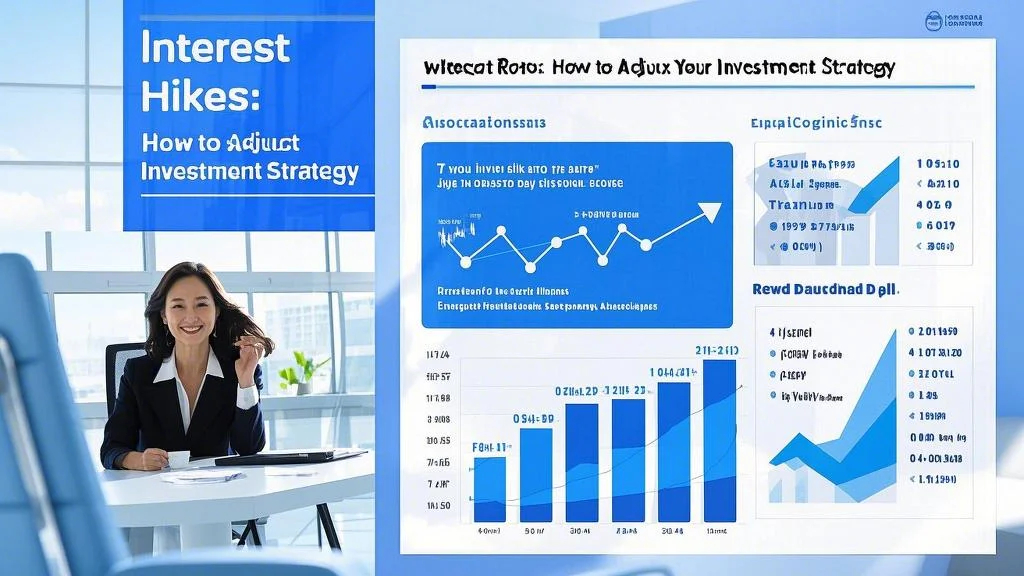Interest Rate Hikes: How to Adjust Your Investment Strategy

Understanding the Impact of Interest Rate Hikes on Investments
Interest rate hikes are one of the most significant tools used by central banks to control inflation, but they also have profound effects on investment portfolios. When interest rates rise, borrowing costs increase for consumers and businesses, which can slow down economic activity and reduce corporate earnings. For investors, this often translates to lower stock prices, particularly for growth-oriented companies that rely on cheap financing to fuel expansion. On the other hand, sectors like financials tend to benefit from higher rates, as banks can charge more for loans and improve their profit margins. Fixed-income investments, such as bonds, typically decline in value when rates rise, as existing bonds with lower yields become less attractive. Understanding how interest rate hikes impact different asset classes is crucial for adjusting your investment strategy and mitigating risks.
Stock Market Forecast: Navigating Rising Interest Rates
The stock market forecast in a rising rate environment is often marked by increased volatility and shifting sector performance. Growth stocks, particularly in the technology sector, tend to underperform as higher borrowing costs weigh on future earnings potential. Conversely, value stocks and dividend-paying companies in sectors like utilities, consumer staples, and healthcare often fare better, as they are less sensitive to interest rate changes. Additionally, financial stocks, such as banks and insurance companies, typically benefit from higher rates, as they can earn more on loans and investments. By staying informed about the stock market forecast and understanding how different sectors respond to rising rates, investors can rebalance their portfolios to align with the changing economic landscape.
Economic Recession Predictions and Their Implications
As central banks implement interest rate hikes to combat inflation, concerns about an economic recession often arise. Higher interest rates can slow down economic growth by increasing borrowing costs and reducing consumer spending, which may lead to a contraction in GDP. For investors, the possibility of a recession underscores the importance of defensive strategies, such as focusing on high-quality companies with strong balance sheets and consistent cash flow. Defensive sectors like healthcare, utilities, and consumer staples tend to perform better during economic downturns, as demand for essential goods and services remains relatively stable. By incorporating economic recession predictions into your investment strategy, you can better prepare for potential challenges and protect your portfolio from significant losses.

The Real Estate Bubble: Risks and Opportunities in a Rising Rate Environment
Rising interest rates can have a significant impact on the real estate market, potentially deflating a real estate bubble. Higher mortgage rates make homebuying more expensive, which can reduce demand and slow price growth. For commercial real estate, rising rates increase borrowing costs for developers and investors, potentially leading to lower property values. However, not all real estate investments are equally affected. Residential properties in high-demand areas may remain resilient, while commercial properties in sectors like office space may face greater challenges. For investors, understanding the dynamics of the real estate bubble and adjusting your strategy accordingly is essential. Consider focusing on properties with strong rental income potential or exploring real estate investment trusts (REITs) that specialize in recession-resistant sectors like healthcare and logistics.
Best Inflation Hedges to Protect Your Portfolio
In a rising rate environment, inflation often remains a concern, making it essential to incorporate inflation hedges into your investment strategy. Tangible assets like real estate and commodities, such as gold and oil, tend to perform well during inflationary periods, as their values rise with prices. Treasury Inflation-Protected Securities (TIPS) are another effective hedge, as their principal value adjusts based on inflation rates. Additionally, equities in sectors like energy, healthcare, and consumer staples can provide a hedge, as these companies often have pricing power and consistent demand. By diversifying your portfolio with inflation hedges, you can protect your wealth and maintain purchasing power during periods of rising prices and interest rates.
Strategies for Adjusting Your Portfolio in a Rising Rate Environment
Adjusting your investment strategy in response to interest rate hikes requires a proactive and diversified approach. Start by reducing exposure to growth stocks and increasing allocations to value stocks and dividend-paying companies, which tend to be more resilient in a rising rate environment. Consider shifting fixed-income investments to shorter-duration bonds or inflation-protected securities, which are less sensitive to interest rate changes. Additionally, explore alternative investments like real estate, commodities, and infrastructure, which can provide diversification and inflation protection. Regularly reviewing and rebalancing your portfolio is also important, as market conditions and economic outlooks can change rapidly. By staying informed about the stock market forecast and economic recession predictions, you can make timely adjustments and position your portfolio for long-term success.
Conclusion: Building a Resilient Portfolio in a Rising Rate Environment
As central banks continue to implement interest rate hikes to combat inflation, investors must adapt their strategies to navigate the changing economic landscape. By understanding the impact of rising rates on different asset classes, staying informed about the stock market forecast, and incorporating inflation hedges, you can build a resilient portfolio that withstands market volatility. Additionally, considering the risks and opportunities associated with a real estate bubble and preparing for potential economic recessions can further enhance your investment strategy. By taking a proactive and diversified approach, you can navigate the challenges of a rising rate environment and position yourself for long-term financial success.